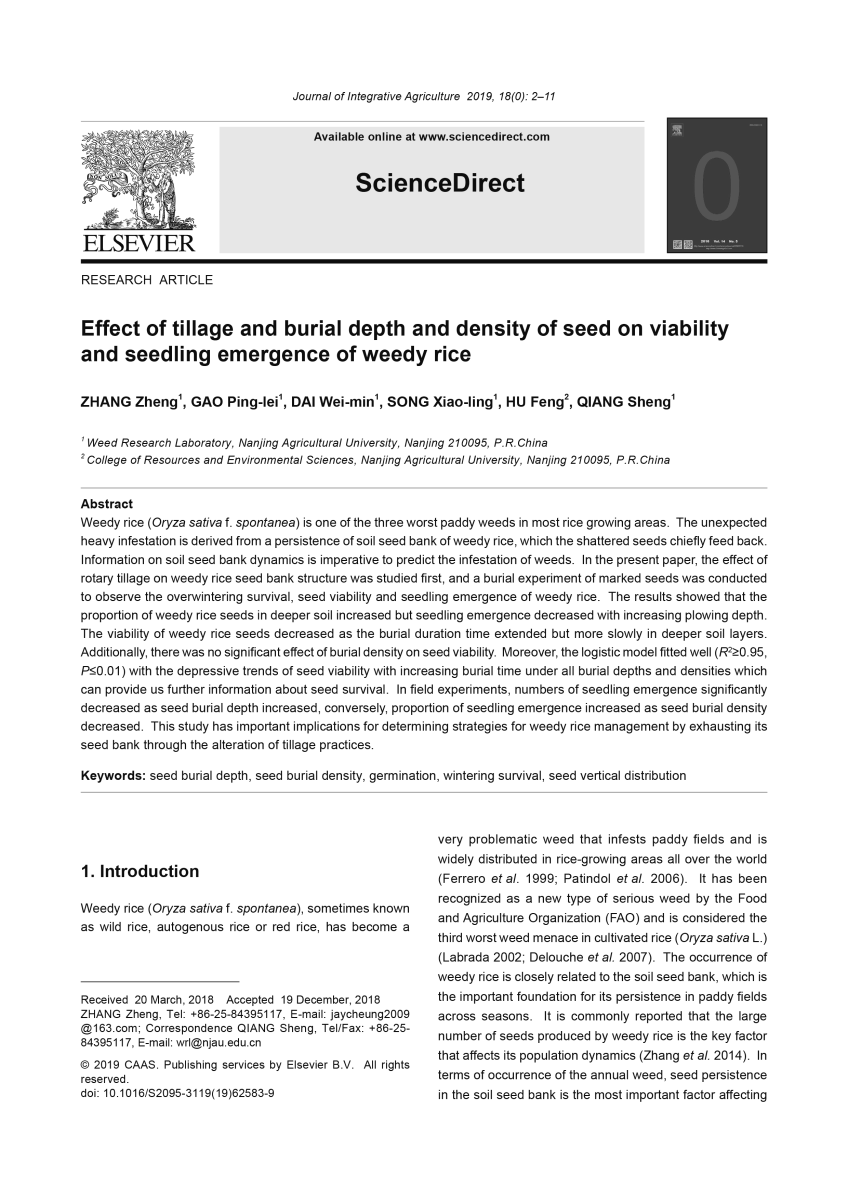Weedy rice (Oryza sativa f. spontanea) is one of the three worst paddy weeds in most rice growing areas. The unexpected heavy infestation is derived from a persistence of soil seed bank of weedy rice, which the shattered seeds chiefly feed back. Information on soil seed bank dynamics is imperative to predict the infestation of weeds. In the present paper, the effect of rotary tillage on weedy rice seed bank structure was studied first, and a burial experiment of marked seeds was conducted to observe the overwintering survival, seed viability and seedling emergence of weedy rice. The results showed that the proportion of weedy rice seeds in deeper soil increased but seedling emergence decreased with increasing plowing depth. The viability of weedy rice seeds decreased as the burial duration time extended but more slowly in deeper soil layers. Additionally, there was no significant effect of burial density on seed viability. Moreover, the logistic model fitted well (R2 ≥0.95, P≤0.01) with the depressive trends of seed viability with increasing burial time under all burial depths and densities which can provide us further information about seed survival. In field experiments, numbers of seedling emergence significantly decreased as seed burial depth increased, conversely, proportion of seedling emergence increased as seed burial density decreased. This study has important implications for determining strategies for weedy rice management by exhausting its seed bank through the alteration of tillage practices.
